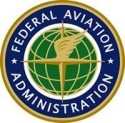Sat, Jul 03, 2010
New Rules Deal Primarily With Communications, Speed
 On July 1, the FAA announced a number of changes to the
restrictions governing the Special Flight Rules Area surrounding
Washington, DC, effective September 1.
On July 1, the FAA announced a number of changes to the
restrictions governing the Special Flight Rules Area surrounding
Washington, DC, effective September 1.
The most significant change will affect pilots who lose radio
contact with controllers while flying under visual flight rules
after departing from an airport located within the Special Flight
Rules Area (a circle of airspace extending 30 miles out from Ronald
Reagan Washington National Airport). Under the current rules, those
pilots must squawk 7600 on their transponders and immediately leave
the Special Flight Rules Area by the most direct route. The new
rule will allow pilots to return to their departure airport if it
is closer than the Special Flight Rules Area boundary. This means
pilots might not have to fly longer distances to airports outside
the Special Flight Rules Area. Pilots who lose radio contact after
departing from an airport located within the Flight Restricted Zone
(an inner ring extending 15 miles out from National Airport) may
return to that airport if it is within five nautical miles. If
neither condition applies, pilots must leave the Special Flight
Rules Area by the most direct route.
To improve safety, the FAA added a speed limit of 180 knots
within the Special Flight Rules Area for aircraft flying under
visual flight rules. This will complement the existing 230 knot
speed limit for aircraft flying under visual flight rules in
airspace extending 30 miles beyond the outer ring of the Special
Flight Rules Area.
The agency made several clarifications to make it easier for
pilots to file flight plans and understand radio requirements. The
FAA added a phone number (866-225-7410) for pilots to call to file
flight plans for the Flight Restricted Zone. Pilots will be asked
to use their confidential pilot identification codes or their
waiver numbers.
The FAA also clarified that aircraft flying within the Special
Flight Rules Area must be equipped with a functioning two-way radio
capable of communicating with controllers on the appropriate
frequencies or UNICOM. The agency strongly recommends that pilots
continuously monitor VHF frequency 121.5 or UHF frequency 243.0 for
emergency instructions while flying in the Special Flight Rules
Area.
More News
Aero Linx: The American Society of Aerospace Medicine Specialists (ASAMS) The Society is a non-profit organization created to serve as a voice for and represent the professional ne>[...]
Class C Service This service provides, in addition to basic radar service, approved separation between IFR and VFR aircraft, and sequencing of VFR aircraft, and sequencing of VFR a>[...]
Have A Story That NEEDS To Be Featured On Aero-News? Here’s How To Submit A Story To Our Team Some of the greatest new stories ANN has ever covered have been submitted by our>[...]
Also: ERAU Uses UAVs, P550 Group 2 UAS, Starship’s Florida Launches, NASA Missions Chopped The Air Force has put out a call to commission a one-to-one copy of the Iranian-des>[...]
Classic Klyde Morris From 11.07.16 (and Remembering Bob...) FMI: www.klydemorris.com>[...]
 ANN's Daily Aero-Linx (08.27.25)
ANN's Daily Aero-Linx (08.27.25) ANN's Daily Aero-Term (08.27.25): Class C Service
ANN's Daily Aero-Term (08.27.25): Class C Service ANN FAQ: Submit a News Story!
ANN FAQ: Submit a News Story! Airborne-NextGen 08.26.25: Iran UAV Knockoffs, X-37B Spaceplane, Army Training
Airborne-NextGen 08.26.25: Iran UAV Knockoffs, X-37B Spaceplane, Army Training Classic Klyde Morris (08.25.25)
Classic Klyde Morris (08.25.25)



